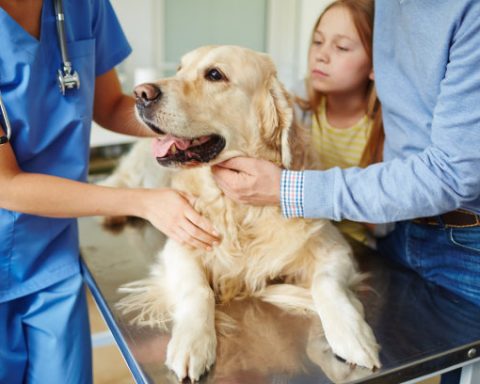Causes
Organophosphorus compounds can enter the dog’s body through the digestive tract, respiratory tract or skin and cause poisoning. Such as accidentally eating the food spreading organophosphorus pesticides, accidentally drinking the contaminated ground water near the spreading area; when preparing or withdrawing organophosphorus pesticides, the scattered powder or droplets of the liquid are contaminated with the kennels and food nearby or downwind, licked and eaten by the dogs, or the dogs are being trained in the downwind direction, work or play and are poisoned by inhaling the aerosol containing the above agents; improper use of medication such as misuse of organophosphorus pesticides in treating the ectoparasites, or Overdosing of trichlorfon to expel gastrointestinal parasites; poisoning by bad elements.
Diagnostic Points
Due to the toxicity of various organophosphorus pesticides, intake, poisoning pathway and the health status of the organism are different, the clinical manifestations and development of poisoning are also diverse. However, most of the acute process, sick dogs in the inhalation, ingestion or skin contamination within a few hours after the sudden onset. At the beginning of the disease, mental excitement and restlessness, muscle spasm, usually from the eye risk, facial muscles, soon extended to the neck, trunk and even the whole body muscles, light tremor, heavy convulsions, muscle clonus of the limbs, the sick dog frequently step, lying down on the swim-like movements. The pupils are narrowed, and in severe cases, they are linear. Sick dogs salivate, appetite greatly reduced or abolished, abdominal pain, intestinal sounds high, continuous, continuous discharge of dilute watery stools, and even fecal incontinence. In the late stage of severe disease, the intestinal sound is weakened or even disappeared. Sweat dripping all over the body, especially severe in the chest, perineum and around the scrotum. Body temperature is elevated and breathing is markedly difficult. Rapid heartbeat, weak pulse, cyanosis of the conjunctiva, and finally death due to asphyxia. A basic diagnosis can be made based on the etiology and clinical symptoms.
Treatment
Atropine sulfate should be administered intravenously. The dosage can be 1 mg/kg body weight. If the symptoms are not reduced after 1~2 hours, the drug can be repeated. When the dog has dry mouth, dilated pupils, stable breathing and rapid heartbeat, which is called “atropinization”, the drug can be stopped.
Since atropine cannot revitalize the cholinesterase that has been bound to organophosphorus, it is best used in conjunction with iodophosphatidine and chlorophosphatidine in severe cases. Iodophosphatidine (Pym), chlorophosphatidine (chlorophosphine) are cholinesterase reviving agents, they have a strong pro-phosphate effect, can take over the phosphoryl group bound to cholinesterase, restoring the hydrolytic ability of the enzyme, and also can make the organic phosphate ester that enters the body lose its toxicity. Therefore, they are antidotes for acute poisoning by organophosphorus compounds.
However, it is less effective in the poisoning of dichlorvos, lego, trichlorfon, malathion and so on, and must be used at the same time with atropine. The dosage of iodophosphamide is 20 mg/kg body weight – times for intravenous injection. The dosage of chlorantraniliprole is 20 mg/kg bw-dose. Difluprednis has a better reenergizing effect on cholinesterase activity than that of dexamethasone, and it can pass the blood-brain barrier and has an atropine-like effect. The dosage is 15-30 mg/kg body weight – times.
